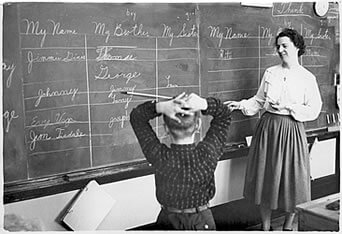 中國活動人士會定期舉行低調的同城聚餐活動,討論各種社會議題,
中國活動人士會定期舉行低調的同城聚餐活動,討論各種社會議題,1961/3/23 胡適談起台灣話吃稀飯叫啜糜 啜飯 都是古音
古時F讀 P音 逢讀碰 碰到什麼人 即逢到什麼人
飯醉,證名。飯後昏倦欲睡之證。又稱食後昏困。《雜病源流犀燭.不寐多寐源流》:「食方已,即睏倦欲卧,脾氣弱,不勝食氣也,俗名飯醉。」
「鼎鈞健飯」印章 3.0cmx3.0cm
邊款:鼎鈞健飯 庚寅端午前三日應亮軒先生之屬為文壇先進鼎公作此 邨夫林家成
邊款:鼎鈞健飯 庚寅端午前三日應亮軒先生之屬為文壇先進鼎公作此 邨夫林家成
王鼎鈞先生是我敬重的前輩作家,1978年9月28日赴美,擔任西東大學雙語教程中心中文主編。
鼎公出國前幾天,我和他有一面之緣,也僅此一面之緣。當時我在「中國書城」開業,先生來買一些書,聽伊說係應聯合國之聘,擔任教科文組織華文職務,該職位原擬邀請沈從文擔任。此之前1976年9月9日毛酋亡,10月江青等四人幫被捕,中國文革之火雖熄猶溫,是否復燃無從得知,沈從文不得出國履踐,乃轉向臺灣尋求適當人才。
而臺灣,1977年余光中以〈狼來了〉一文引發鄉土文學論戰,11月發生中壢事件,翌年1978年5月蔣經國就任總統,因北越攻克南越,越南人民大量流亡海外,國民黨依此大肆宣傳虛構之《南海血書》,以駁斥中共「國民黨下臺,共產黨不來」之傳言!
據聞,鼎公後來之所以滯美緣於不想再受到跟監,只好選擇去國不歸,在異鄉筆耕度日,鼎公亦於其回憶錄敍之甚詳,實為孤臣孽子、憂國憂民之襟懷也!
亮軒先生是研究「王鼎鈞學」之大家,2010年端午前,亮軒先生有美國之行,探視乃姊,並拜訪鼎公,行前命余刻此印以贈,乃以三天急就而成,不負使命,不久得鼎公墨書答謝。
能與鼎公再結此因緣,實三生之幸也!值此端午再度,遙祝鼎公席安!
☆此文粗成,亮軒先生不期而駕臨敝店,承其指正某些謬誤而改之,可免對鼎公不敬!
健飯
食量大,食慾好。宋袁浦《壽馮德厚》詩之三:“祝子長年仍健飯,好書讀到夜沉沉。”清吳偉業《得友人札詢近況詩以答之》:“京洛故人聞健飯,黃塵騎馬夾城頭。”魯迅《書信集·致蔣抑卮》:“觀已,即歸寓大囓,健飯如恆。”
健談
善於談論,歷久不疲。醒世恆言˙卷十八˙施潤澤灘闕遇友:「那老兒因多了幾盃酒,一路上問長問短,十分健談。」
領頭字
| |
|---|---|
| 飯 | |
解形
| |
| 《說文》:“飯,食也。从食,反聲。” | |
注音
|
釋義
|
| (一)fan4一)《廣韻》扶晚切,上阮奉。元部。 | (1)
吃飯。《說文‧食部》:“飯,食也。”段玉裁注:“食之者,謂食之也,此飯之本義也。”《論語‧述而》:“飯疏食飲水,曲肱而枕之,樂也在其中矣。”宋辛
棄疾《永遇樂‧京口北固亭懷古》:“憑誰問:‘廉頗老矣!尚能飯否﹖’”《徐霞客遊記‧遊天台山日記》:“又十五里,飯于筋竹庵。”魯迅《華蓋集續
編‧記念劉和珍君》:“至多,不過供無惡意的閑人以飯後的談資。”
(2)以食飼人或喂牲口。《洪武正韻‧產韻》:“飯,药钫人也。”《莊子‧田子方》:“百里奚爵祿不入于心,故飯牛而牛肥。”《史記‧淮陰侯列傳》:“諸母漂,有一母見信飢,飯信。”宋周述《吳自鄄横東作》:“年來不作繁華夢,飯犢郊原學耦耕。”《徐霞客遊記‧滇遊日記十一》:“度入龕而酌之飯之,勸亦如
生人。” (3)唅。古代將米貝珠玉之類放入死者口中。《禮記‧檀弓上》:“飯設飾。”陸德明釋文:“飯,唅也。”又:“子游曰:‘飯於牖下,小歛於戶內。大歛於阼,殯於客位。’”孫希旦注:“以米貝實尸口中也。” (4)手大指的最下處。《字彙補‧食部》:“飯,又大擘指本也。”《儀禮‧士喪禮》:“設決,麗於掔,自飯持之設握乃連掔。”鄭玄注:“飯,大擘指本 也。”二)《廣韻》符万切,去願奉。煮熟的穀類食物,多指米飯。清段玉裁《說文解字注‧食部》“飯”下:“……引伸之,所食為飯。”《廣韻‧願韻》: “飯,《周書》云,‘黃帝始炊穀為飯。’”《洪武正韻‧諫韻》:“飯,炊穀熟曰飯。”《墨子‧備城門》:“為卒乾飯,人二斗,以備陰雨。”《禮記‧曲禮 上》:“毋摶飯。”孔穎達疏:“取飯作摶,則易得多,是欲爭飽,非謙也。”唐吳融《送知古上人》:“幾程村飯添盂白,何處山花照衲紅。”毛澤東《新民主主 義的憲政》:“既然有敵大家打,就應該有飯大家吃。有事大家做,有書大家讀。”又泛指每天定時吃的食物,如:早飯,中飯,晚飯。 |
| 3. 啜 部首 口 部首外筆畫 8 總筆畫 11 | ||||||||
| 注音一式 ㄔㄨㄛˋ | ||||||||
漢語拼音 chu | 注音二式 chu | |||||||
| ||||||||
| 啜茶 | ||||
| 注音一式 ㄔㄨㄛˋ ㄔㄚˊ | ||||
漢語拼音 chu ch ch | 注音二式 chu ch ch | |||
| ||||
腳尾飯
腳尾飯為死者遺體腳跟邊之菜肴,故有腳尾飯之稱。其內容通常是一碗米飯中置一顆熟鴨蛋與各式配菜(如豆乾、蔬菜、雞腿等等), 並直插竹箸一雙。此乃親人希望逝世者可吃飽後,有力前往地府報到。但亦有一說,人們會向去世的親人道:「一路好走,等鴨蛋孵出小鴨再回到陽世罷!」,由於 熟蛋不可能有小鴨破殼而出,有希望親人勿留戀人世間的意味。 由於隨著葬禮放置很久,腳尾飯常會發霉,終至不能食用。 另外,可食用的稱為拜飯,在祭拜後即可食用。其菜色則通常有雞(或以鴨、鵝等代替)、豬肉、魚(故又名「三牲」)等。
吳敦義---白賊院長 巧言令色大師---吃飯跟吃屎都一樣
吳敦義---白賊院長 巧言令色大師---說 蔡英文案的文件造假 3月或8月 都一樣.....
某母親: 這是台灣話說 吃飯跟吃屎都一樣.....
As different as chalk and cheese
Meaning
Two things that are very different from each other.Origin
We have hundreds of phrases to indicate the similarity of one thing with another and similes like 'as alike as two peas in a pod' are commonplace in everyday speech. However, as far as I know, there is only one phrase that does the opposite and explicitly refers to the difference between things and that is 'as different as chalk and cheese'. This is an old expression and the earliest citation of it is in John Gower's Middle English text Confessio Amantis, 1390:Lo, how they feignen chalk for chese.Tourist boards in several of the chalkland areas of the UK try to place the phrase's origin in their locality and allude to vague connections between chalk and the local cheese. None of these are convincing and they clearly owe more to marketing than to etymology. So, how did the phrase come about?
There must have been a time in the development of English when we had no standard phrase to express the idea that two things were 'as different as X and Y'. When someone coined such a phrase, and that someone may well have been Gower in 1390, clearly he needed candidates for the roles of X and Y. That doesn't sound difficult, after all most things are different from most other things.
"Maybe, 'as different as a cormorant and a lamp-post'", thinks our coiner, "or 'as different as floorboards and greengrocers'". "No, 'as different as chalk and cheese' sounds better". Why? For no better reason that the fact the 'chalk' and 'cheese' are short and snappy words that alliterate. The English language is packed full of phrases that contain pairs of rhyming or alliterating words - often just because the person who coined them liked the sound of them; for example, hocus-pocus, the bee's knees, riff-raff etc.
 A modern-day spin-off of 'chalk and cheese' is 'chalk and talk'. This refers to the traditional teaching method where the teacher stood at the front to address the class while writing on the blackboard with a stick of chalk (which those of a certain age will well remember). The phrase emerged in the UK in the 1930s but had a shortish run as a widely used expression as classrooms began to be equipped with whiteboards in the 1960s. 'Dry-wipe marker pen and talk' never caught on.
A modern-day spin-off of 'chalk and cheese' is 'chalk and talk'. This refers to the traditional teaching method where the teacher stood at the front to address the class while writing on the blackboard with a stick of chalk (which those of a certain age will well remember). The phrase emerged in the UK in the 1930s but had a shortish run as a widely used expression as classrooms began to be equipped with whiteboards in the 1960s. 'Dry-wipe marker pen and talk' never caught on.




沒有留言:
張貼留言